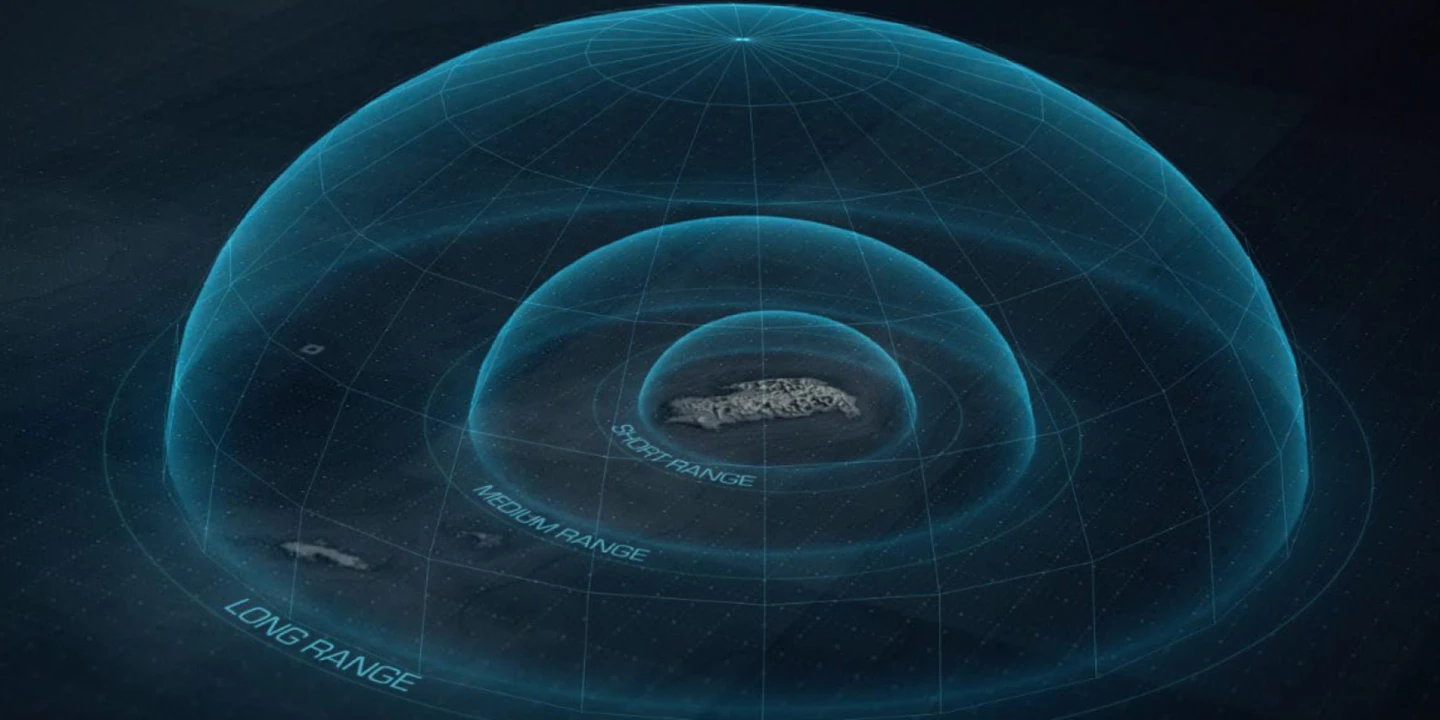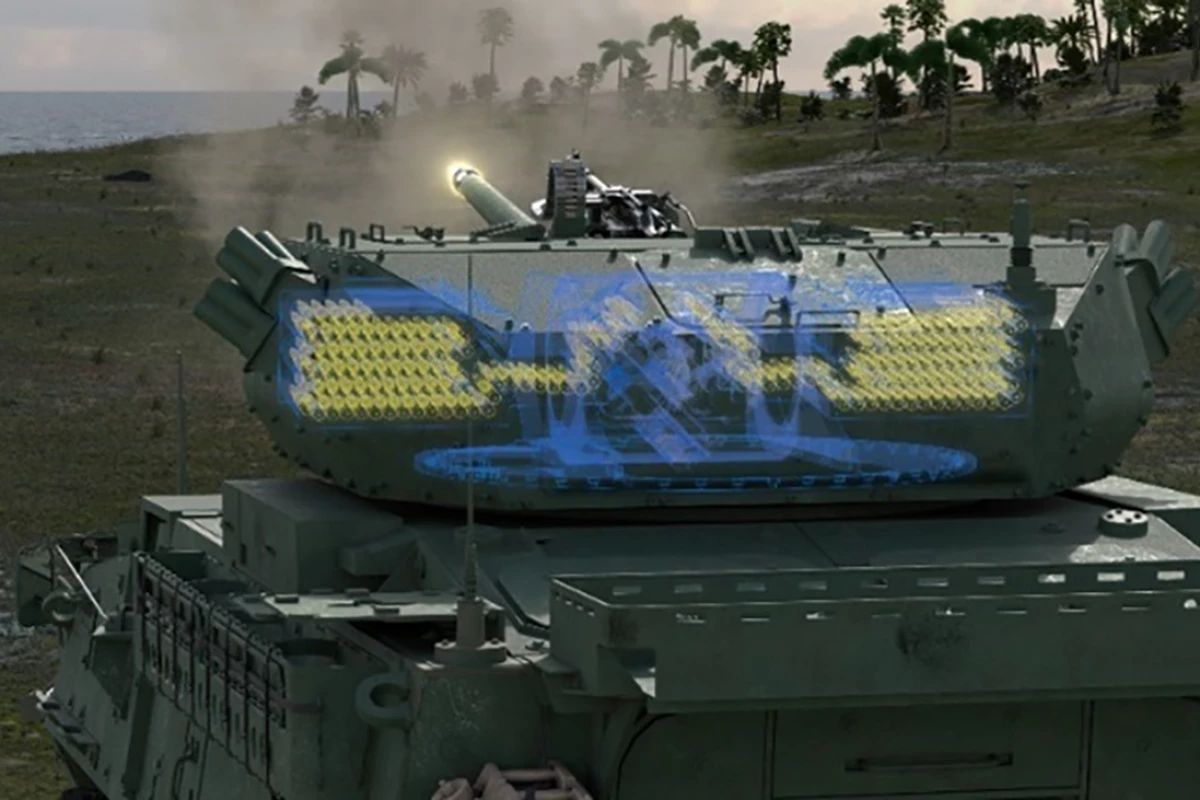Northrop Grumman is developing a layered air defense against drone swarms centered on a new rapid-fire chain gun system armed with self-guided smart ammo that can take out drones at a fraction of the cost of missile defenses.
Somewhere, a battlefield commander and his staff are monitoring the airspace around their base. Radar and the vast sensor network detect an incoming squad of warplanes – heavy bombers and arsenal carriers. Well outside the base defenses, the digital icons identifying each aircraft suddenly blossom into a wave of cruise missiles, supersonic anti-air defense missiles, and swarms of armed drones.
The commander gives the orders to go on full alert and arm all defenses. The cruise missiles and supersonics leap forward as the swarms line up behind. Despite jamming and evasive maneuvers, the base radar is able to track the hostiles.
Suddenly, the night is lit up as interceptor missiles leap from their steel and aluminum canisters and disappear into the sky. Many miles away, the cruise and supersonics update their data and map the terrain as they approach their target. Seconds later, they vanish in huge, noisy balls of fire as their numbers are suddenly diminished by the exploding interceptors.
The surviving missiles and the drones behind them carry on. Now past the interceptors, they should have a clear run. That idea is soon put to rest as heavy guns blaze on the ground ahead of them with surprising rapid fire. The survivors of this salvo are then met with even more rapid blasts of medium gunfire. The incoming shells don't whiz past, Instead, they zero in on each drone. The same happens to the few left that encounter the small caliber guns that fire at an insane rate, but it isn't like machine guns that spray indiscriminately. It's like an intelligent shotgun bursts with each pellet a homing missile that explodes, sending out clouds of deadly tungsten shrapnel that shreds and rend the drones and the one or two missiles that have made so far.
The night becomes quiet again. That is, until the fighters and uncrewed loyal wingmen of the counterstrike force roar overhead to deal with the attackers.
As recent events in the Middle East have shown, modern missile defenses have become incredibly effective, with the ability to take out massed cruise missile, drone, and rocket attacks so hardly any reach their targets and none cause serious damage. It's impressive, but also extremely expensive, with each defensive missile costing as much as US$4 million per round.
It isn't just that such systems are expensive, they also take a long time to build up stock piles, are difficult to move about, and can be overrun if the attacking force is large and persistent enough.
With drones being used by Ukraine to replace conventional air support, it's clear that these uncrewed, cheap-to-build airframes are fast becoming a major component in modern arsenals across the world and war planners will have to adjust and adjust quickly.
One way is to use a layered defense. Instead of relying on one system to act as a blanket of protection, different countermeasures are used to intercept and neutralize different threats at different distances from the target.
This is the rationale behind Northrop Grumman's Cannon-Based Air Defense (CBAD). Essentially, it's a defense made up of existing long-range interceptor missiles to take out supersonic and hypersonic threats; long-range, heavy caliber guns; medium-range, medium caliber guns; and short-range, small caliber guns.

Of course, using guns for air defense is as old as the airplane. What's different about CBAD's guns is that they're rapid-fire chain guns that carry the shells on a belt and spit out the rounds like a machine gun. Even this isn't that new. Anti-missile defenses like Phalanx and Goalkeeper ward off supersonic missiles by throwing up a wall of metal in front of the threat. Modern chain guns like the one in the video below have something else that changes the game.
That something, which CBAD uses, is self-guided smart ammunition equipped with proximity fuses. These lock onto their target, guide themselves in, and explode before impact to spray the target with shrapnel. This increases lethality, reduces the risk of collateral damage, and is less expensive.
"CBAD drastically decreases the number of rounds that must be fired to hit the target," said Ryan Carlson, chief engineer of CBAD for Northrop Grumman. "With cannon air defense we’re not firing thousands of rounds per minute. We’re executing very specific fire salvos – handfuls of rounds – at intended targets with extreme precision."

The bottom line is that CBAD's medium-size gun batteries cost half that of a missile battery and 99.5% less per interception. That's savings of millions per round. In addition, a medium battery can carry 200 to 400 rounds compared to a missile battery's two to six and is easier to deploy.
Currently, CBAD is undergoing simulation tests to find out how to best configure it and integrate it into command and control systems. The first field demonstrations are expected by the end of the year, with production to follow shortly after.
"We’re modeling and evaluating which calibers we should use and doing a lot of mission and campaign-level analyses," said Carlson. "We are also looking at what command-and-control architecture makes the most sense and intend to integrate CBAD into battle managers like Northrop Grumman’s Integrated Battle Command System (IBCS) and Forward Area Air Defense Command and Control (FAAD-C2)."
Source: Northrop Grumman







